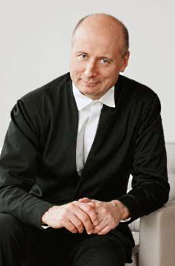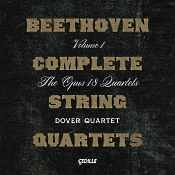Also, music by Coll, de Falla, Albeniz, Harden. Jacob
Kellermann, guitar; Christian Karlsen, London Philharmonic Orchestra;
Norrbotten NEO. BIS BIS-2485.
By John J. Puccio
According to Wikipedia, “The modern word guitar, and its antecedents, has been applied to a wide variety of chordophones since classical times and as such causes confusion. The English word guitar, the German Gitarre, and the French guitare were all adopted from the Spanish guitarra, which comes from the Andalusian Arabic (qitharah) and the Latin cithara, which in turn came from the Ancient Greek. Kithara appears in the Bible four times (1 Cor. 14:7, Rev. 5:8, 14:2 and 15:2), and is usually translated into English as harp.”
So the origins of the modern guitar date back thousands of years. The surprise is that Spanish composer Joaquín Rodrigo (1901-1999) didn’t write what has become quite possibly the most-popular guitar concerto of all time, the Concierto de Aranjuez, until 1939. What’s more, it wasn’t even recorded until well into the 1940’s and didn’t achieve worldwide popularity until classical guitarist Narciso Yepes made the first of his several recordings of it a few years later.
Today, practically every notable classical guitarist in the world has either recorded the work or aspires to record it. The release we’re considering at the moment is the 2019 recording by Swedish guitarist Jacob Kellermann (b. 1984), with Maestro Christian Karlsen leading the London Philharmonic Orchestra.
As you no doubt know, Rodrigo got his inspiration for the Concierto from the gardens at Palacio Real de Aranjuez, the spring resort palace and gardens built by Philip II in the last half of the 16th century. The music attempts to convey the feeling of another time and place by summoning the sounds of nature.
Rodrigo described the first movement Allegro con spirito as "animated by a rhythmic spirit and vigour without either of the two themes interrupting its relentless pace." Kellerman and Karlsen provide the movement with plenty of the composer’s idea of “spirit,” while not going so far as to make the music sound reckless or hurried. What’s more, Kellerman conveys the temper of flamenco dance in the music, always a good move, although Kellerman refers to it in the booklet note as “a march.” Whatever, he handles it well.
The composer said the second movement "represents a dialogue between guitar and solo instruments” (cor anglais, bassoon, oboe, horn, etc.). What he didn’t say was how utterly beautiful it can be, something audiences have been saying for more than eighty years now. At its heart the music is a soulful, almost mournful dialogue between the guitar and various instrumental soloists, particularly the cor anglais. Taken too slowly, this movement can sound overly sentimental, even drippy. Kellerman takes it perhaps a shade too far in the other direction, however, losing some of the music’s poignancy along the way. It’s here, too, that the grandeur of the London Philharmonic threatens to overwhelm Kellerman’s guitar work.
Then there’s a perky little closing tune, one that Rodrigo said "recalls a courtly dance in which the combination of double and triple time maintains a taut tempo right to the closing bar." It seems to me it should be taut and lively, maybe a bit effervescent, sparkly. Here, we get Kellerman in an appropriately playful mood, and he closes out the show in good form.
Kellerman is a fine guitarist, and his Rodrigo is of a high order. However, I still think Pepe Romero’s 70’s recording for Philips (now on Decca) is the more well-rounded interpretation, and the Yepes accounts carry more authority (especially the 1959 release remastered by HDTT).
Accompanying Rodrigo’s guitar concerto are several shorter works for guitar by Francisco Coll (the contemporary work, Turia), Manuel de Falla (Hamenaje), Isaac Albeniz (Evocacion), and Pete Harden (another contemporary piece called Solace and Shimmer). I can’t say I liked the Coll music as much as I probably should have; it tries too consciously to imitate Rodrigo in a modern style I did not find attractive. The Harden work, however, shows more promise and demonstrates the influence of Rodrigo’s second movement. Still, why do so many modern composers eschew melody and rhythm as if they were some kind of mutant viruses?
Producer Hans Kipfer and engineer Jens Braun recorded the Rodrigo piece at Henry Wood Hall, London, England in October 2019 and the others at Studio Acusticu, Pitea and Sveriges Radio Studio 3, Stockholm, Sweden in 2017 and 2018. They made the recording in hybrid 2-channel stereo and multichannel SACD, the regular 2-channel stereo playable on any ordinary CD player and the SACD 2-channel and multichannel formats playable on an SACD player. As always, I listened to the 2-channel SACD layer.
I’ve always liked the sound of BIS recordings, and this one is fairly good, too. There is a modest reverberation in the hall that imparts a feeling of realism, and there is enough dynamic range to convey the excitement of the music. Most important, the guitar seems aptly lifelike, even with the modest reverb I mentioned before. If I have any concerns about the recording, it’s that the instruments loom a bit large, there is a little too much evidence of multi-miking, and there isn’t a lot of distance, air, or depth amidst the orchestral accompaniment.
JJP
To listen to a brief excerpt from this album, click below:
By John J. Puccio
According to Wikipedia, “The modern word guitar, and its antecedents, has been applied to a wide variety of chordophones since classical times and as such causes confusion. The English word guitar, the German Gitarre, and the French guitare were all adopted from the Spanish guitarra, which comes from the Andalusian Arabic (qitharah) and the Latin cithara, which in turn came from the Ancient Greek. Kithara appears in the Bible four times (1 Cor. 14:7, Rev. 5:8, 14:2 and 15:2), and is usually translated into English as harp.”
So the origins of the modern guitar date back thousands of years. The surprise is that Spanish composer Joaquín Rodrigo (1901-1999) didn’t write what has become quite possibly the most-popular guitar concerto of all time, the Concierto de Aranjuez, until 1939. What’s more, it wasn’t even recorded until well into the 1940’s and didn’t achieve worldwide popularity until classical guitarist Narciso Yepes made the first of his several recordings of it a few years later.
Today, practically every notable classical guitarist in the world has either recorded the work or aspires to record it. The release we’re considering at the moment is the 2019 recording by Swedish guitarist Jacob Kellermann (b. 1984), with Maestro Christian Karlsen leading the London Philharmonic Orchestra.
As you no doubt know, Rodrigo got his inspiration for the Concierto from the gardens at Palacio Real de Aranjuez, the spring resort palace and gardens built by Philip II in the last half of the 16th century. The music attempts to convey the feeling of another time and place by summoning the sounds of nature.
Rodrigo described the first movement Allegro con spirito as "animated by a rhythmic spirit and vigour without either of the two themes interrupting its relentless pace." Kellerman and Karlsen provide the movement with plenty of the composer’s idea of “spirit,” while not going so far as to make the music sound reckless or hurried. What’s more, Kellerman conveys the temper of flamenco dance in the music, always a good move, although Kellerman refers to it in the booklet note as “a march.” Whatever, he handles it well.
The composer said the second movement "represents a dialogue between guitar and solo instruments” (cor anglais, bassoon, oboe, horn, etc.). What he didn’t say was how utterly beautiful it can be, something audiences have been saying for more than eighty years now. At its heart the music is a soulful, almost mournful dialogue between the guitar and various instrumental soloists, particularly the cor anglais. Taken too slowly, this movement can sound overly sentimental, even drippy. Kellerman takes it perhaps a shade too far in the other direction, however, losing some of the music’s poignancy along the way. It’s here, too, that the grandeur of the London Philharmonic threatens to overwhelm Kellerman’s guitar work.
Then there’s a perky little closing tune, one that Rodrigo said "recalls a courtly dance in which the combination of double and triple time maintains a taut tempo right to the closing bar." It seems to me it should be taut and lively, maybe a bit effervescent, sparkly. Here, we get Kellerman in an appropriately playful mood, and he closes out the show in good form.
Kellerman is a fine guitarist, and his Rodrigo is of a high order. However, I still think Pepe Romero’s 70’s recording for Philips (now on Decca) is the more well-rounded interpretation, and the Yepes accounts carry more authority (especially the 1959 release remastered by HDTT).
Accompanying Rodrigo’s guitar concerto are several shorter works for guitar by Francisco Coll (the contemporary work, Turia), Manuel de Falla (Hamenaje), Isaac Albeniz (Evocacion), and Pete Harden (another contemporary piece called Solace and Shimmer). I can’t say I liked the Coll music as much as I probably should have; it tries too consciously to imitate Rodrigo in a modern style I did not find attractive. The Harden work, however, shows more promise and demonstrates the influence of Rodrigo’s second movement. Still, why do so many modern composers eschew melody and rhythm as if they were some kind of mutant viruses?
Producer Hans Kipfer and engineer Jens Braun recorded the Rodrigo piece at Henry Wood Hall, London, England in October 2019 and the others at Studio Acusticu, Pitea and Sveriges Radio Studio 3, Stockholm, Sweden in 2017 and 2018. They made the recording in hybrid 2-channel stereo and multichannel SACD, the regular 2-channel stereo playable on any ordinary CD player and the SACD 2-channel and multichannel formats playable on an SACD player. As always, I listened to the 2-channel SACD layer.
I’ve always liked the sound of BIS recordings, and this one is fairly good, too. There is a modest reverberation in the hall that imparts a feeling of realism, and there is enough dynamic range to convey the excitement of the music. Most important, the guitar seems aptly lifelike, even with the modest reverb I mentioned before. If I have any concerns about the recording, it’s that the instruments loom a bit large, there is a little too much evidence of multi-miking, and there isn’t a lot of distance, air, or depth amidst the orchestral accompaniment.
JJP
To listen to a brief excerpt from this album, click below:




















